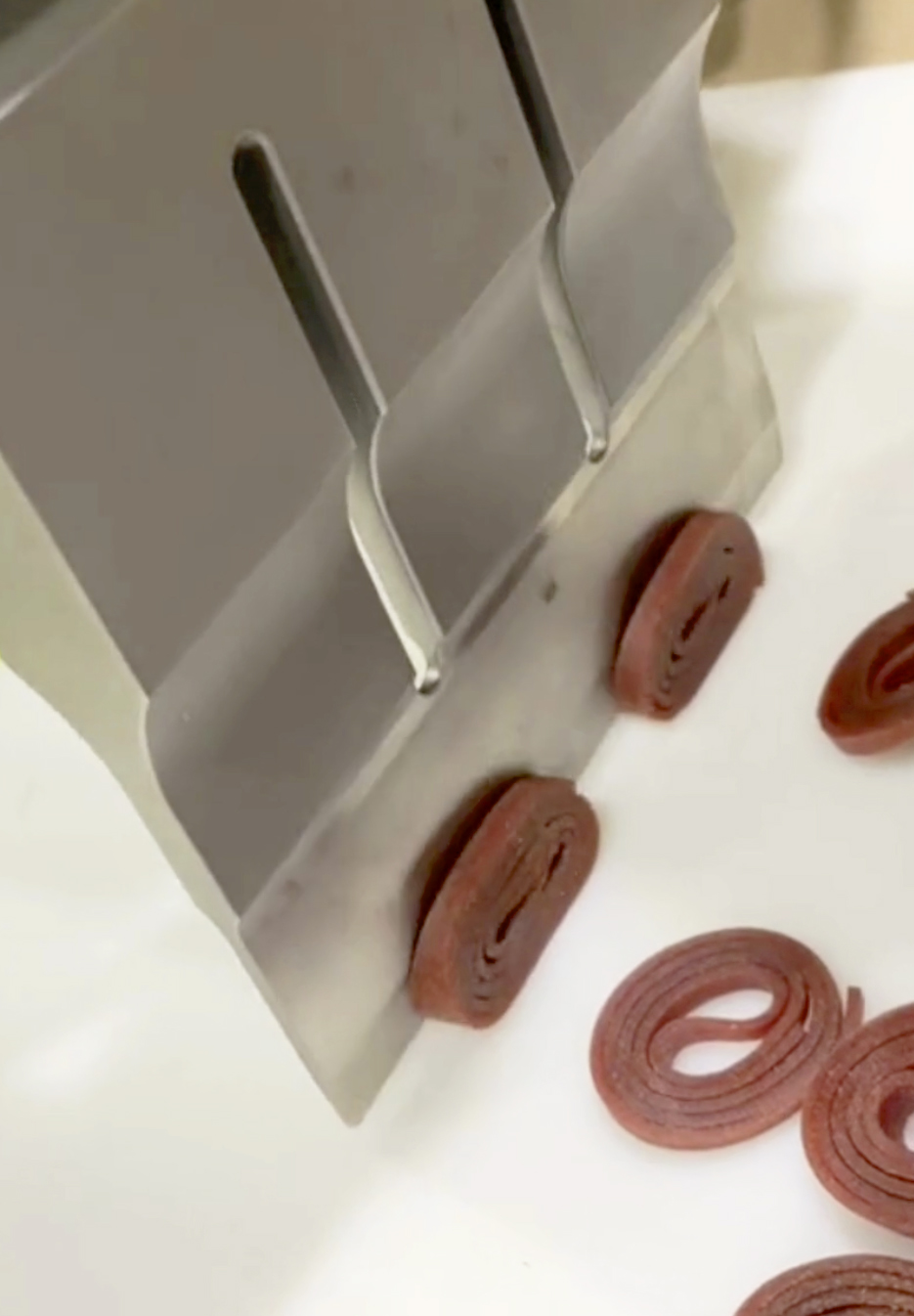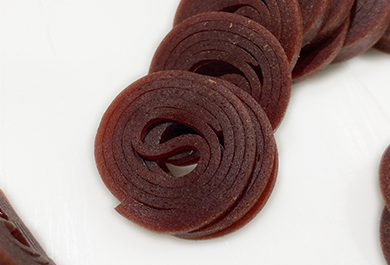Products such as fruit rolls present many challenges for food industry production because of their texture, and stickiness, causing adhesion and an accumulation of residue on the blade, along with other factors influencing cutting performance.
MatissEquipment’s team of experts is always enthusiastic about such challenges. This is why they decided to conduct cutting tests in order to test the performance of ultrasonic cutting on this type of product. Result: a clear and definite success.
During these tests, various criteria and elements were to be verified:

Clean, precise and appealing cut
Obtaining precise, clean, and eye-pleasing cuts for the consumer were among the criteria of this test. So this also means ensuring that the cutting process not only preserves the integrity and quality of the product but also ensures precision for portions that meet standards. The visual aspect of the product is also a criterion to be met as the product must seem visually appealing for the consumer.
Avoiding crushing and distortion
A good cut must also be made in order to avoid crushing and distortion of the product, which must be both attractive and in compliance with your quality and presentation standards. By avoiding crushing and distortion, the product does not become a lump of fruit that has lost its visual appeal, but rather a fruit roll that is in compliance with its description.
Preserving texture and appearance
A product that has not been crushed, and compressed, at the cutting stage, will retain its form once cut. The product can then be packaged and put on the market at its best. Thus, the product the consumer buys will match its description as well as the consumer’s expectations.
Reduce adhesion of the product on the blade
By reducing adhesion of the product on the blade, not only is loss of product mass decreased, but downtime for cleaning of the blade is also decreased. A product that does not stick to the blade is a goal to be reached in every respect.
Avoiding accumulation of residues
Whether there is an accumulation of residue on the blade or the product, both are to be avoided. If the product accumulates on the blade, this will lead to frequent stops to remove the product, hence, interruptions in production. Whereas if residue accumulates on the product itself, its shape and presentation are affected. Limiting accumulation by using an ultrasonic blade is the solution for optimized production.
Less stops for cleaning = higher production rate
One of the challenges of continuous production is maintaining a high rate to ensure an optimized production process. A technology like ultrasonic cutting significantly decreases stops for cleaning and thus optimizes your long production runs. Because the ultrasonic vibrations largely limit residue adhesion to the blade, downtime for cleaning is considerably diminished.
ULTRASONIC CUTTING, TO ADD BITE TO YOUR PRODUCTION!
Ultrasonic cutting technology offers a solution that is perfectly suited to specialty products that are either soft, room temperature, sticky, etc., and that require adapted processing.
When conducting our tests, a blade vibrating at 20,000 Hz with a vibration amplitude of 90% resulted in an efficient and superior quality cut. Despite a slight accumulation due to the heat generated, the self-cleaning system delivered a high performance: The activation of ultrasonic vibrations in a water bath provides a quick cleaning without any manual intervention.
Since each product has its own particularities, these tests are essential in validating if ultrasonic cutting is the optimal solution for your production.
Do you have challenging products to cut? Let’s talk about it!

